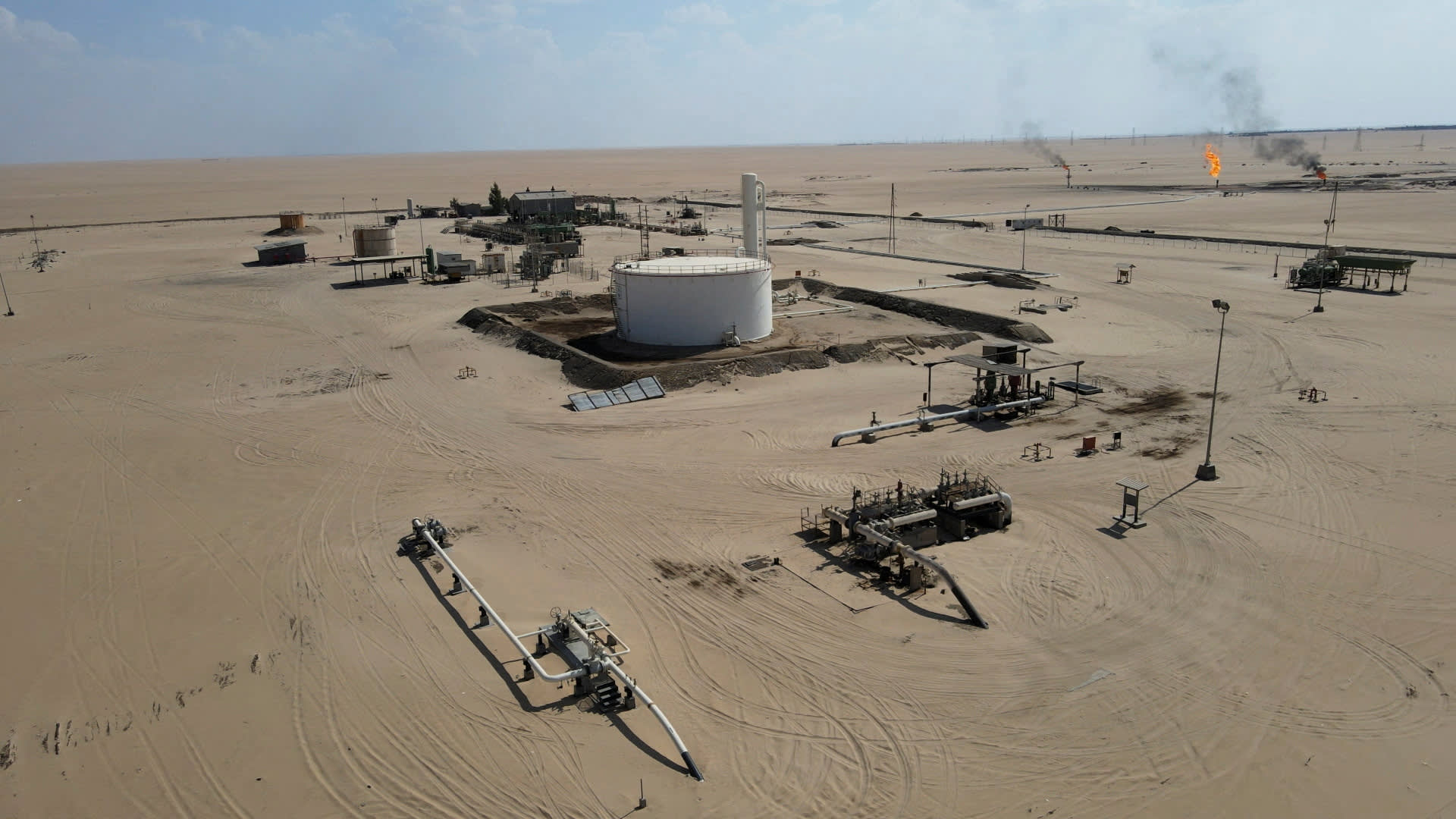
A general drone view shows the Nafoora oil field in Jakharrah, Libya, August 27, 2024.
Jawhar Deehoum | Reuters
U.S. crude oil futures fell nearly 4% on Tuesday, erasing all gains for the year as an increase in supplies is potentially on the horizon as demand falters.
The move came after a report that Libya’s rival governments could reach a deal that would help restore oil output after days of disruptions. Libya’s eastern government in Benghazi has slashed production in a dispute with the U.N.-backed government in Tripoli over who should head the central bank.
The governor of Libya’s central bank, Sadiq al-Kabir, told Bloomberg that there were “strong” indications the North African country’s rival governments were nearing a deal to end the dispute.
Here are Tuesday’s energy prices:
- West Texas Intermediate October contract: $70.65 per barrel, down $2.90, or 3.94%. Year to date, U.S. crude oil has fallen 1.4%.
- Brent November contract: $74.05 per barrel, down $3.47, or 4.5%. Year to date, the global benchmark has dropped 3.9%.
- RBOB Gasoline October contract: $1.98 per gallon, down more than 10 cents, or 5.06%. Year to date, gasoline has fallen 5.5%
- Natural Gas October contract: $2.15 per thousand cubic feet, up more than 2 cents, or 1.08%. Year to date, gas has declined 14.5%.
Oil prices had already taken a turn lower as OPEC+ is poised to increase production in the coming weeks, and manufacturing activity in China and the U.S. disappointed the market.
OPEC+ delegates have indicated that the group is still planning to increase oil production in October, sources told Reuters and Bloomberg.
Manufacturing in China, meanwhile, fell to a six-month low in August, according to data released over the weekend. China is the world’s largest importer of crude oil.
And manufacturing activity in the U.S. was slower than expected last month, according to a report from the Institute for Supply Management Tuesday.
OPEC+, however, made clear in June that it could reverse the planned production increase based on market conditions.
The best course for OPEC+ would be to wait until December given slowing demand in China, Helima Croft, head of global commodity strategy at RBC Capital Markets, told clients Monday.

